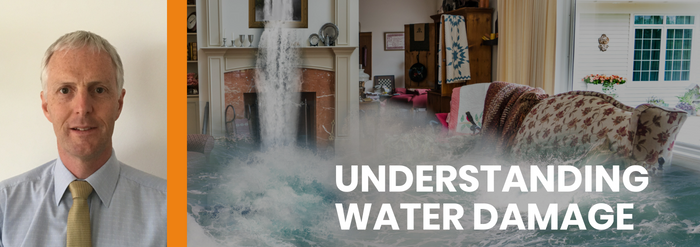Ian Gibbs, National Technical Manager, Sergon Building Consultants (Sedgwick)
When a building has been flooded or suffered a major water leak, even the most experienced construction professional is likely to recommend a complete strip out of all the damaged internal materials. However, the latest research has demonstrated that many of these materials, such as plasterwork, plasterboard and wood, are resilient to water and, with the right drying regime, will recover perfectly well when left in situ.
Any additional strip out work only exacerbates the problem for property owners. When a contractor removes resilient materials, which they believe are water damaged, it adds to the specification for repair works and cost. The tenants are also out of their property for longer than necessary, and all the time the building is uninhabitable, it increases costs for the property owner.
Educating the construction industry on how many building materials are resilient to water is a real challenge, and this general lack of understanding means that property owners don’t always get the most up-to-date advice.
The increasing frequency and severity of flooding has created a greater emphasis on this whole issue and improvements in our flood defences are not the solution. Two years ago, the Government set up the DEFRA’s Resilience Round Table, bringing together a diverse group of interested parties – the Environment Agency, DEFRA, universities, the insurance industry, not for profit organisations, etc. Their remit is to find ways of increasing the uptake of resilience measures, which involves research into resilient materials.
Definite progress has been made. One of the Round Table task groups focuses on the area of certification and standards, and a Code of Practice is due to be launched in early 2019. This Code of Practice will provide information that gives a better understanding of resilience, whatever the source of the water damage, and a guide for property owners on how they can make their buildings more resilient to flooding.
Long-term, we must increase our investment in property level resilience to reduce the impact of flooding on property owners, across the UK. However, the right advice in developing resilience in housing stock is needed if owners are to invest wisely. A professional assessment of the flood risk and advice on how best to respond to water damage incidents is required, together with a detailed specification of the most suitable resilient repairs and refurbishment.
As a business, we’ve been advising property owners on resilience measures and construction for many years. Through wider research and extensive claims experience, we have a clear understanding of the problem, and we’ve pioneered the minimal “soft strip out” approach, which attempts to dry many materials in situ. Recognising the resilience of individual materials is essential, together with the options for effective drying, while considering the cost/benefits. It also requires the support of an integrated supply chain, which grasps this approach, and will deliver the best results.
There’s still a long way for the construction industry to go but there are increasing examples of good practice, and this will develop further with the support of the Resilience Round Table.
Ian Gibbs will be speaking about insuring against risk at a free event on 26th September in Watford: Maintaining Social Housing safety, security & Reputation supported by Building Research Establishment, the Northern Housing consortium, Styles and Wood, Aviva, Sedgwick and Business in the Community. Book your free place.



